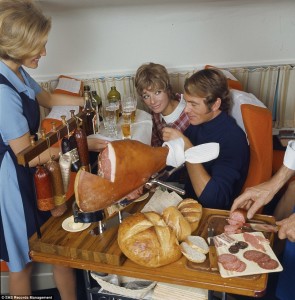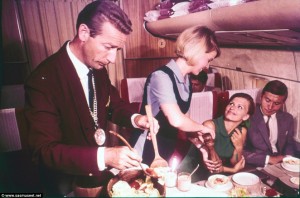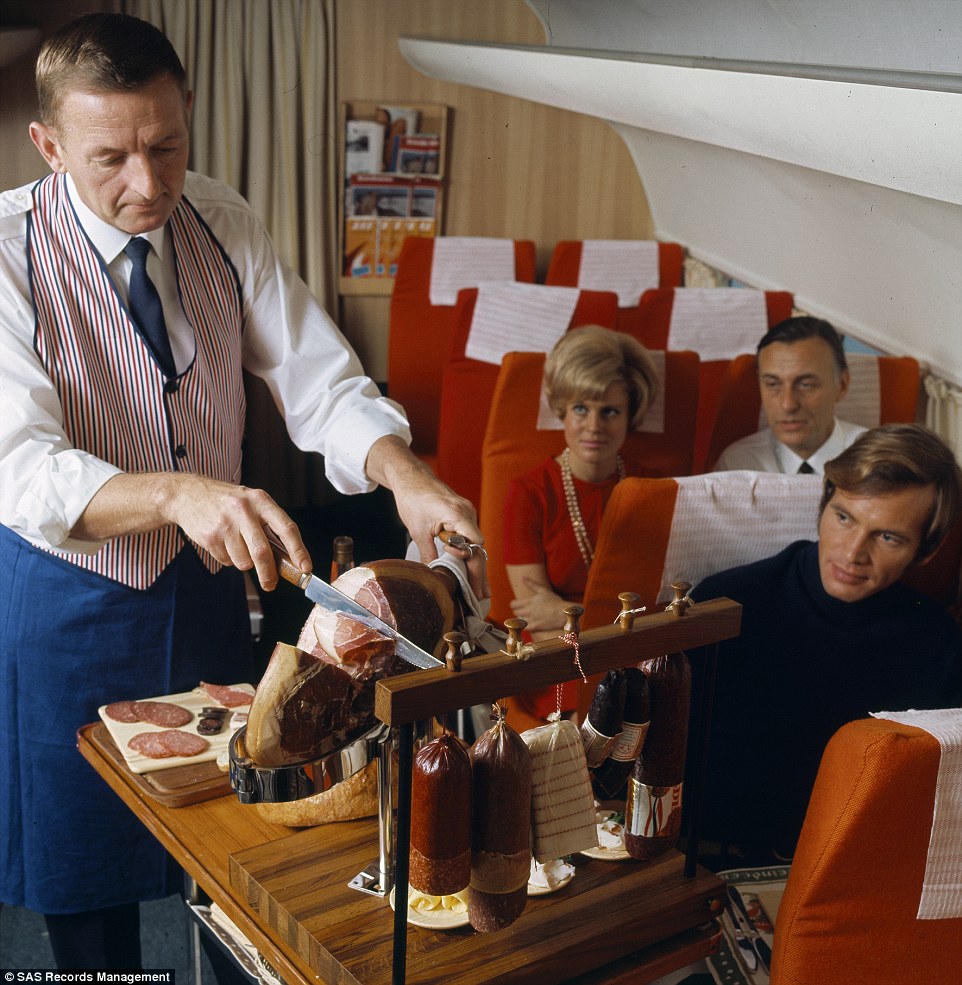What Gordon Ramsay Would Say To American Airlines Beef Wellington
It was a long flight to Australia, and I don’t know why I ordered the Beef Wellington. Maybe thinking of the amazing dish from Gordon Ramsay’s staff at the Savoy Hotel. But as I was pulling away the stringy beef I could hear Gordon Ramsay:
“Come here, you” – to the flight attendant.
“Look at this. Its over cooked. Why did you serve this?”
Airline attendant mumbling.
Can’t you see Ramsay’s look of disappointment as he tosses the beef into the trash and says, “When did you stop caring?”
History of Airline Food – the good, well, good memory and mostly bad food
Airlines have been re-heating food in ovens for years. But the first airline food that is recorded as being served was in 1919 and it was cold fried chicken – which they passed out with cigarettes. Cold fried chicken – that would have been better than the Beef Wellingstring.
Shortly after World War 2 airlines prepared some food that was actually cooked in the galley ovens. Some served cold and sliced. And the TV dinners brought a new idea to airline food.
So why did they have good food back then? Part of the reason was simple: it was competition. Prior to deregulation in 1978 airlines could only charge a set amount for a route and whether you flew Eastern or Pan Am if you went from Chicago to New York the price was exactly the same. First class was set at 130% above the coach ticket. So how do you attract customers? Food.
What Temperature Do They Re-Heat The Food?
Most of the food was better in our memory than it was in fact, because there are many dishes that you simply should NOT re-heat in a twenty minute version of a toaster oven. The standard temperature is 275 degrees Celsius or 525 degrees Fahrenheit in a convention oven. This means the food will be hot and sterile and so will your taste buds.
But What About How Your Tastes Change At 35,000 Feet?
They will, but most planes have cabin pressures equal to Flagstaff, Arizona – where they have two James Beard Award winning chefs. The air will be dry – like in Flagstaff. The food tastes poorly in many airlines because they overcook food, which removes flavor. It isn’t the altitude of the aircraft, it is the attitude of the airline where they compromise on quality and don’t use science to help them make the food better. There are many foods that, from the perspective of science, should not be re-heated (see the list below).
But the airlines hired all these great chefs for the meals.
Yes they did. I am sure that Marcus Samuelson can make a fine sandwich in his restaurant, but reheat it in that oven and it won’t work. I would not want to have my name on those menu items. How the food comes out in a test kitchen is one thing, but take that same food and re-heat it in the oven. That great sauce they made for the chicken cannot hide the overcooked meat.
But they cook the food so close to the airline, bring them in carefully, and throw them out if the plane is delayed.
Good hygiene is not the issue. Taste is. No bacteria would grow on that food – it will have been cooked completely. So completely that you won’t be able to tell the origin of the mystery meat.
Some Airlines Do It Well (International, not domestic airlines).
Joel Rubuchon figured out that using Sous Vide cooking would help Air France up their game. And it has. Right now Air France consistently wins traveler awards for their food.
The best airlines for food
Air France
British Airways First Class
Singapore Airlines
Korean Air
Emirates
Cathay Pacific
Qatar Airways
Lufthansa
Foods To Avoid On An Airline:
Pasta
Any pasta that is re-heated will become a starchy mush. Using an electric wok they can cook noodles with simple vegetables for a fresh delicious dish, as was done on Air Italia. But most is pre-cooked then re-heated in those convection toaster ovens. The nature of pasta is that once the starch has been heated it will begin to reform in longer molecular subunits that bind together in long strands of sugar polymers.
Steaks and Chops
These “uptown” cuts of meat have loose muscle fibers with water trapped in them. Once they are heated at a temperature above 140 degrees the protein unwinds and the meat becomes dry. Re-heating steaks and chops is best done in a Sous Vide at 130 degrees for thirty minutes. Yes, airlines could replace the convection ovens with Sous Vide.
Rice
Like pasta, once rice has heated and cooled it reforms molecular bonds and they become sticky and clump together. Not a good choice for food.
Chicken
Lean meats, like the white meat of chicken, has so little fat that it is not protected against heat. Thus the protein molecules denature, giving up their water and the meat becomes dry. The chef may try to make up for this with some ginger-soy-lotus sauce, but the meat will still be dry and unpalatable. This food should not be re-heated in anything but a Sous Vide.
Foods That Are OK on an Airline:
Cheese plates and any Charcuterie
Most cold dishes
Most vegetarian Menus
What Can be Done?
By cooking the food Sous Vide you avoid the over-heating and spotty heating done by the typical airline convection oven. Building a Sous Vide Unit for airlines would be simple. They would need some plumbing, or the water could be contained and gotten rid of at the next stop. Having the meals prepared and packaged in Sous Vide bags would insure the proteins would not over-cook and would be ready.
The other is cold meals – cold steak, cold chicken, cold salmon as proteins – note many of the photos of the past had cold meats carved for the customers.
Until then become a vegetarian when you travel. Or, buy the sandwich before you get on the plane and enjoy it.







